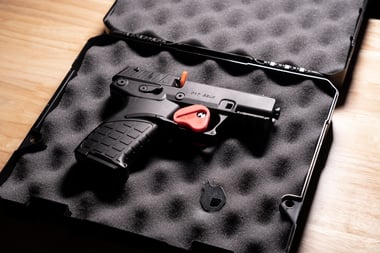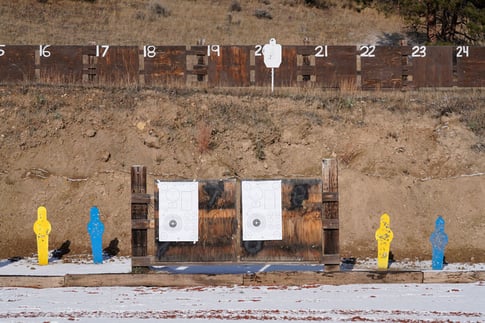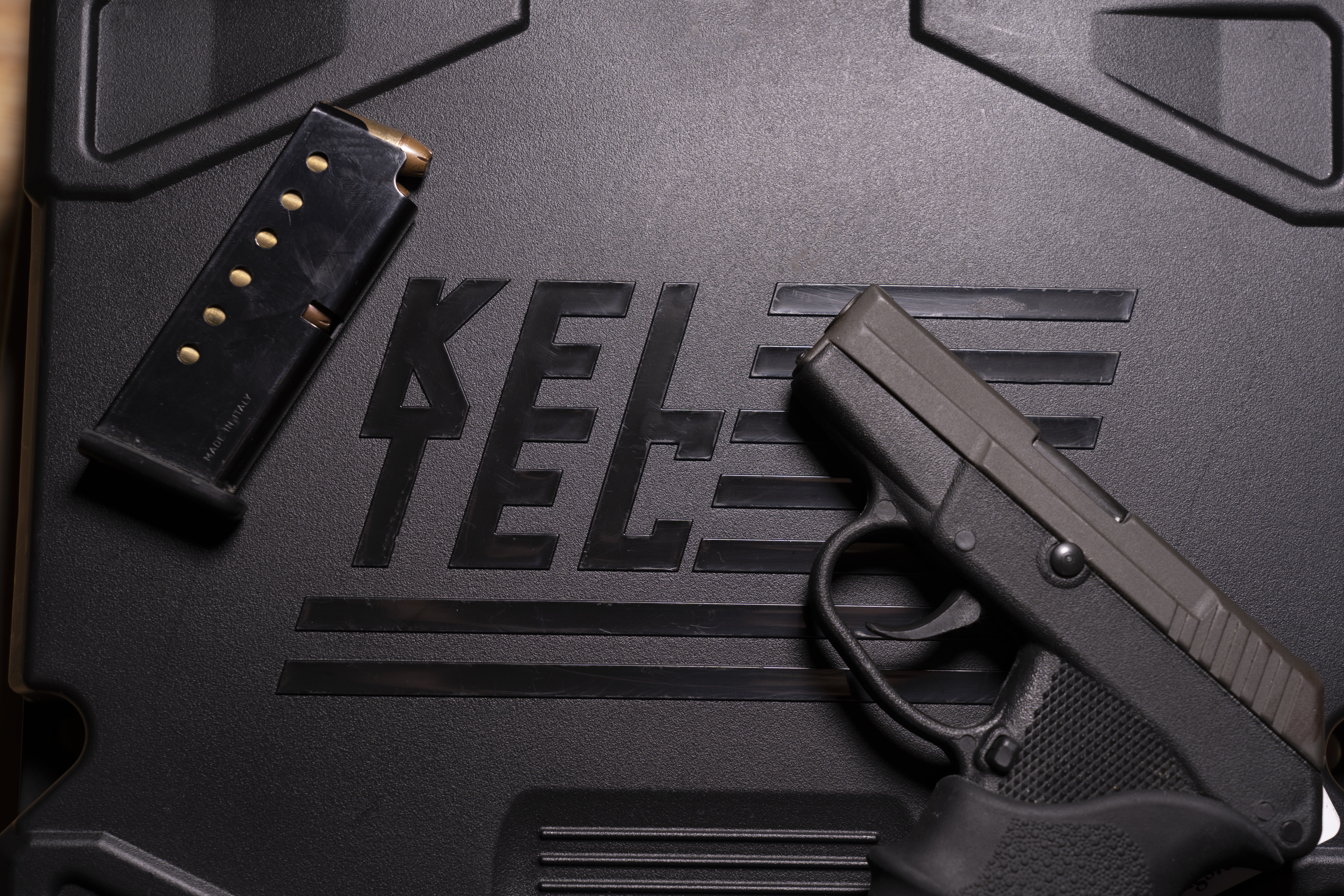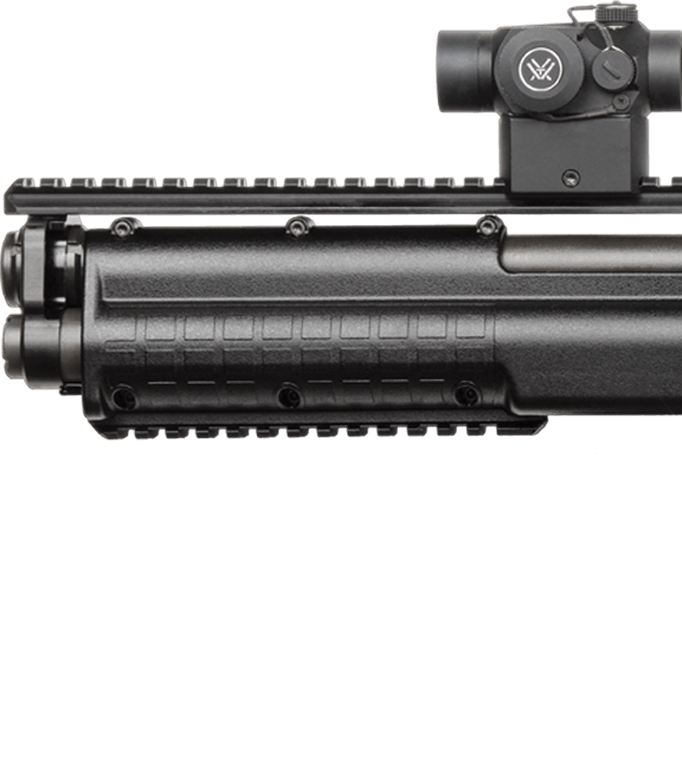Owning or handling a firearm comes with the serious responsibility of being educated on the safest ways to use, store, transport and carry it. Regardless of how familiar you are with different types of firearms and their various uses, it is imperative to know the rules of gun safety to ensure your safety, as well as the safety of others. Whether you own firearms or not, being familiar with them and understanding how they operate is essential to avoiding a potential, negligent tragedy.
Loaded/Unloaded
As it has been said many times, you should always treat a gun like it is loaded. This means practicing muzzle discipline and never pointing your gun at something you aren’t willing to destroy. It’s crucial to be aware of muzzle direction at all times. While this may seem obvious, avoidable accidents occur every year when gun handlers do not practice proper muzzle discipline. Secondly, your finger should not be on the trigger until the sight is on target. Instead, rest your finger on the frame and outside the trigger guard until you’re absolutely ready to fire. Lastly, regardless of who claims that a gun is unloaded, do not accept that as fact. Double-check that the firearm is truly unloaded both visually and physically, then continue to treat it with the same care that you would a loaded gun.
Storage
Deciding where and how to store a firearm should not be taken lightly. First and foremost, it’s necessary to choose a location that is not accessible to unauthorized persons, this includes your own family. Properly storing your firearm protects it from getting into the wrong hands, and it also minimizes the chances of firearm theft. Storage options range from trigger locks, gun cases, locking steel gun cabinets and the best option… gun safes.
Trigger locks are an affordable choice that prevents guns from being fired by an unauthorized person, and they are often included with the purchase of a firearm. Next, you can find a wide range of locking gun cases at any sporting goods store, which guarantees that you will find one to fit your specific needs, and budget. While not entirely theft-proof, they do protect your gun from physical damage and prying eyes. Locking steel gun cabinets provide
 increased storage space for firearms and maintain a manageable, portable weight. Finally, gun safes are hands-down the best way to prevent unauthorized access to the gun, while simultaneously protecting it from damage or theft. Biometric gun safes are ideal for firearm owners who own multiple firearms and need it out of the reach of kids, curious visitors and potential intruders. The biometric mechanism allows for fast retrieval in case of an emergency and we highly recommend that option.
increased storage space for firearms and maintain a manageable, portable weight. Finally, gun safes are hands-down the best way to prevent unauthorized access to the gun, while simultaneously protecting it from damage or theft. Biometric gun safes are ideal for firearm owners who own multiple firearms and need it out of the reach of kids, curious visitors and potential intruders. The biometric mechanism allows for fast retrieval in case of an emergency and we highly recommend that option.
Transportation
Firearm transport regulations vary from state to state, but there are general rules that everyone should follow when transporting a gun. First, ensure that the gun is unloaded and in a case before attempting to transport it. Make sure that the action is open with no ammunition in the case, utilize a chamber flag or simply disassemble the gun before placing it in the case. If traveling by car, guarantee that the firearm is secured, instead of floating or in some other position where it could be thrown with the car’s motion. The last thing you want is a loaded gun flying around your vehicle in the event of an accident, hard turn or rapid stop. The final transportation tip is to avoid displaying your firearms in plain sight where it can draw attention from potential thieves.
Range Rules
The shooting range can be an enjoyable way to practice using your firearm. However, there are several rules to keep in mind when at the range. Before entering, read the posted range rules. If they are not posted or you can’t find them, contact a Range Safety Officer before you even take your firearm(s) out of the case. This is your opportunity to ask any questions -- it’s easier to make clarifications before you enter the noisy range. Once you put on your eye and ear protection and grab any range supplies you may need, you’re ready to enter the range. Chamber flags are a good safety practice. These brightly colored flags identify an empty chamber and are a courtesy to those on the range. If you don’t have any chamber flags, ask any range or proshop employee and they will gladly provide you with them.
 Always remember the cardinal rules of gun safety: practice muzzle discipline by keeping your gun pointed in a safe direction at all times, with your finger off the trigger until you’re ready to fire. Also be mindful of keeping your gun pointed downrange, which means straight in front of you and parallel to the walls, ceiling and floor of indoor ranges. In the case of an official outdoor range, keep your muzzle pointed at the berm, know what is in front of your target and what is behind your target at all times.
Always remember the cardinal rules of gun safety: practice muzzle discipline by keeping your gun pointed in a safe direction at all times, with your finger off the trigger until you’re ready to fire. Also be mindful of keeping your gun pointed downrange, which means straight in front of you and parallel to the walls, ceiling and floor of indoor ranges. In the case of an official outdoor range, keep your muzzle pointed at the berm, know what is in front of your target and what is behind your target at all times.
Your gun should remain unloaded when waiting to begin shooting or switching shooters -- remove the magazine and ensure that the chamber is empty. Lastly, respect cease-fires and remember that if you see anything odd or dangerous, you can call a cease-fire at any time! Maintaining safety is everyone’s responsibility on the shooting range, not just the range officers and instructors. Lastly, clean up after yourself and unless otherwise directed, pick up your brass after a range session and dispose of it in the proper range bin or take it home.
Concealed Carry
Just like transporting a firearm, federal laws vary when it comes to carrying a concealed weapon. Before carrying a gun, you should read and understand the legislation around concealed weapons in your state. Foremost, when carrying a concealed weapon, it is critical that the gun be tightly and securely fastened into its holster, with the trigger guard completely covered. This way, no matter what you are doing, the gun will not move from its position, nor will it fire. The holster should firmly attach to your belt using loops or clips. The carrier’s mindset is equally important -- he or she should take the initiative to avoid any conflict or confrontation that could lead to violence. Every precaution is worth taking when it comes to firearm safety, so it’s crucial to take the time to educate yourself about gun safety before you choose to handle or use a firearm, no matter the level of gun handling experience you have.
At KelTec, we believe that it's vital for everyone using a firearm to be fully prepared and confident -- with a solid grasp of safety principles. A little refresher of these rules never hurts, even for people who have been active in the firearms community for many years. See more of our innovative range of pistols, rifles, shotguns, accessories and apparel online anytime. Feel free to contact us at 321-631-0068 for help building your next firearm, or with any questions you may have with securing your KelTec firearm.





